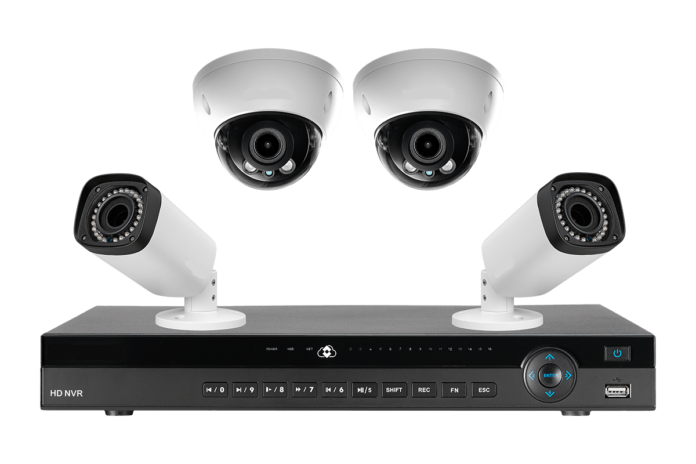Table of Contents
What’s the Difference?
Security technology for homes and businesses just keeps improving. Property owners and managers realize that the police can’t be everywhere, but the best security devices can. In particular, improvements in video surveillance systems have brought them to a level that would have been impossible to imagine just a few years ago.
The decreasing cost and improving the quality of these systems have resulted in the installation of countless surveillance setups all over the country in homes, businesses, churches, and countless other locations. If you’ve made the decision to install a surveillance camera system, you probably found quickly that there are DVR systems and NVR systems. Choosing an exact model is easier when you review this list of 16 DVR & NVR camera systems, and deciding between DVR and NVR technology will be easier after you review this simple explanation.
How NVR’s and DVR’s Process Video
The first distinction between the two forms of technology is right there in the first letter. NVR stands for a network video recorder, while DVR stands for the digital video recorder. The terminology explains the technology.
A network video recorder receives completed video data from the camera. It has captured the footage and converted it to a digital form before it is transmitted to the storage system in the NVR. On the other hand, the cameras attached to a digital video recorder still use traditional analog technology, transmitting it through analog cables to the DVR for conversion into a digital format and subsequent storage.
When is a DVR System Better?
Now that you see how the technology differs between NVR’s and DVR’s, you may wonder how you decide which system is better. As is always the case with technology, your own personal preferences are the biggest factor in determining which route to go.
A system with a DVR uses analog video, which limits your choices in camera placement. Wifi cameras cannot be linked to a DVR because their signals are not yet in a digital form that can be transmitted wirelessly. For applications where it is practical to use cables, you can get to work finding the best outdoor wireless security camera system with DVR.
When is an NVR System Better?
In situations where digital enhancements are helpful, NVR systems are more effective. Facial recognition technology and audio recording can be done with the IP cameras on an NVR system, so in an intense application where it is very important to get a lot of detail, these units will perform better.
NVR systems also use an ethernet cable for transmission of video. This is more readily available and can be much easier to manage than the analog coaxial cable used by the traditional CCTV cables on a DVR system.
Where Does Cost Figure In?
The primary factor in the cost of the two systems is the cameras. The CCTV cameras used with a DVR are built with traditional technique that has been in place for many years, which has allowed the cost to work its way down to a point lower than the digital cameras used with an NVR.
With that said, some of the savings on CCTV could be lost if long cable runs are needed. IP cameras operating wirelessly have no additional cost for each additional foot they must transmit data to the recorder, so for longer distances, an NVR might still be the cheaper option despite the higher costs of IP cameras as compared to CCTV cameras. Once again, it comes back to individual circumstances and the cost of the add-ons needed to complete the project.
What About the Nuts and Bolts of Installation?
In terms of installation, there are some significant differences between DVR systems and their NVR cousins. Many facilities install security systems in place of existing setups, and they already have coaxial cable in place. In that case, it is much more cost-effective to go with a DVR because its cameras can use the existing coaxial cable–an easier option than running new ethernet cable everywhere.
When cable does have to be run, coaxial is a little more difficult to work with. It carries wires for both the video signal and the camera’s power, so it is a thicker cable that requires larger holes to be drilled and maybe a little tougher to work around corners or through crowded spaces. Running new cable is typically easier with ethernet on an NVR system. Finally, as we have already mentioned, any type of long distances between the camera and recorder will usually be easier and cheaper to cover with IP cameras on an NVR.
Whether an NVR or a DVR works right for your particular situation, you will be well-protected. Both systems provide sharp images that are easy to review, store, and share. The mere presence of a camera system is a powerful deterrent to would-be intruders and thieves, and those who boldly attempt entry in spite of the cameras are more likely to be identified and prosecuted.
After reviewing your particular needs and choosing the appropriate technology for your application, use a good buyer’s guide to settle on a particular model of DVR or NVR and put the system to work protecting your property, family, and employees.









